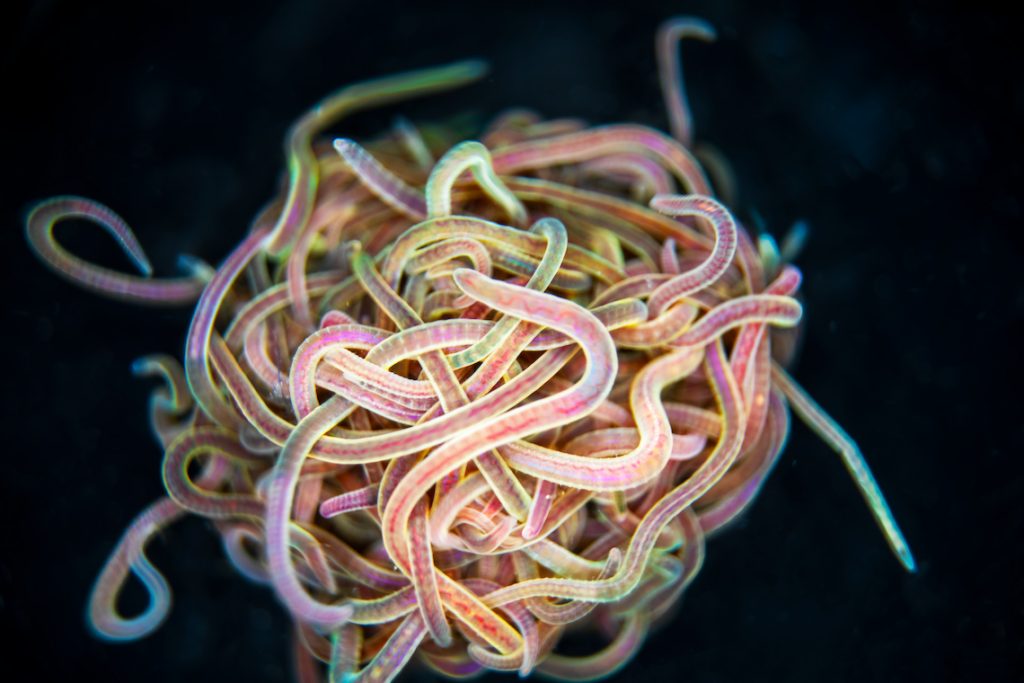How a ball of worms can untangle itself
Worms can knot and unknot depending on how quickly individuals change their turning direction, published in an article in the journal Science.
Considering that untangling a knotted ball of yarn is a frustrating and time-consuming task, Vishal Patil, Harry Tuazon and colleagues, including WPI-SKCM2 member, Jorn Dunkel, were intrigued by how California blackworms can untangle themselves in mere fractions of a second. Blackworms, clusters of between 5 to 50,000, can self-assemble into tangles and then untangle themselves. For worms, the tangles are an evolutionary behavioral strategy for regulating temperature and moisture levels, as well as enabling group movement. Being able to untangle is important to escape from danger. And for Patil and colleagues, the worm tangles are a great model system for studying knotting and unknotting in thin, flexible filamentous structures, which include proteins.
Their recent paper in Science reported three major breakthroughs. Firstly, the research team used ultrasound imaging to see how worms tangle in 3D. The team introduced a new way to quantify the level of tangling called ‘contact link.’ This metric is an important development for the study of entangled filaments because it does not require artificially closing the strands into a loop, as traditional methods from knot theory do, noted by Dr. Eleni Panagiotou in a perspective piece in the same issue of Science.
Secondly, experimenting with worms in shallow wells, the team studied the process of how worm tangles assemble and disassemble. To understand how the worms move over time, Patil and Dunkel developed a mathematical model describing worm movement by its preferred speed and turning direction. They discovered that worms that wind around many times before changing direction form tangles. On the other hand, worms that frequently change their winding direction untangle.
Thirdly, the team developed another simplified model that describes the movement of one worm crossing paths with obstacles representing other worms. Using this model, the team was able to predict the amount of tangling given how worms move and are spaced. They found that there are many potential strategies – combinations of worm motion and spacing – that could result in tangling or untangling, but worms only use a few. Worm movement, which is limited by what is feasible and efficient for worms, is such that it is easy to switch between tangled and untangled states. This model opens interesting avenues for studying how other types of filaments handle tangling and untangling. And the team is excited by the possibility of engineering new materials with adaptable physical properties for autonomous knotting and unknotting.
Citation: Patil & Tuazon, et al. “Ultrafast reversible self-assembly of living tangled matter.” Science. 28 April 2023.
DOI: https://www.science.org/doi/10.1126/science.ade7759
Photo: Harry Tuazon



